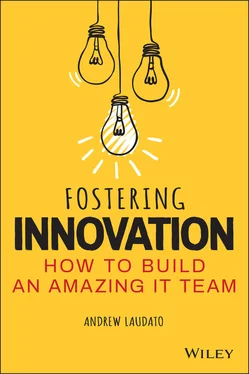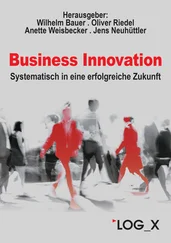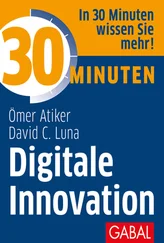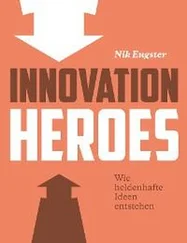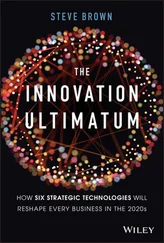This concept applies directly to leadership. I started as a programmer/analyst, an old term for developer. I moved my way up to senior programmer analyst, manager, senior manager, director, and then VP of applications. In each of those roles, I paid close attention to my leaders and, frankly, judged their behavior. There were some behaviors I despised, some I loved, and some I didn't understand. By remembering what it's like to be in the trenches, you'll hopefully be a better General to your troops. If you didn't work your way up to CIO and instead came through a different path, there's still hope for you. If your path was a boarding school, Harvard, McKinsey, and now CIO (congrats, that's impressive), you must put in extra time and energy to get honest input from the rank and file. If your path to CIO was from a business function, read The Adventures of an IT Leader by Robert D. Austin. 1 In that book, a functional leader complains so much about IT that the CEO puts him in charge of it. There are a lot of good insights in that book. The most important insight is understanding why the prior CIO got fired. Technology is one part of the CIO role—albeit a small part. Five critical skills are needed to be a successful CIO: 1 People skills 2 Business expertise 3 Technical prowess 4 Project management 5 Administration You're probably good at three or more of these, or you wouldn't have gotten the job. What's your weakest subject? Focus on rounding out your skillset in each of the areas. Put the most effort into the items you struggle with.
Grow Through Listening Grow Through Listening As you look to improve, start by listening. Listen to your team. Listen to your peers. Seek out and listen to other CIOs. Read everything you can get your hands on. Build a network of IT leaders across your industry. Being a CIO is a lonely job. Although I use the word peers to describe the other executives in your company, they aren't peers in the sense that they can relate to your challenges. The first time I sat down and had a beer with a CIO from a similar-sized company in the same industry, I could feel the stress leave my body. I was not alone—CIOs in other companies have similar challenges. When I left retail and took a CIO role in senior living, the issues were remarkably similar. Every company has challenges, and every CIO is struggling to balance the demands being placed on them. Seeking these conversations is not just imperative for your education; it's also good for your mental state. I vividly remember an uncomfortable discussion with the chief supply chain officer. Let's call him Joe. Joe said to me, “Every day, we complete all of our work before we go home. If we get 10,000 orders, we stay until 10,000 orders are shipped. If we get 15,000 orders, then we work until they get shipped. IT only completes a small fraction of what I need. Imagine if we only shipped 100 orders and called it a day.” An IT Department's unique challenge is that only a tiny percentage of what is requested ever gets completed. Keeping your business partners satisfied while rarely giving them what they want is a tricky business.
A Proactive Mindset A Proactive Mindset In January 2020, mere weeks before the coronavirus pandemic utterly disrupted our world, I was promoted from CTO to COO of The Vitamin Shoppe. While I still oversee the IT Department, I am now one of its biggest customers. We're in the digital age, and all of my functions rely heavily on technology to be successful. Seeing IT from the outside changed my perspective. As the COO, I consider every problem in our business to be my problem. When you accept that everything is your problem, you save a lot of time and energy not being defensive and pointing fingers. Can you develop this mindset without being a COO? A leader who focuses on fixing problems is a valuable asset to their organization. We are in a changing field in changing times. A career in technology is a lifelong commitment to learning. Having the mindset and willingness to learn and adapt is vital to building and running a world-class IT Department. In the next chapter, we'll look at what sets an IT Department head and shoulders above the rest.
Note Note 1 1. Robert Austin (Harvard Business Review Press, 2016), The Adventures of an IT Leader, Updated ed.
2 An Amazing IT Department? What's That? 3 Conventional Wisdom Is Wrong A Tale of Two Projects The Downward Spiral of Micromanagement Notes
5 II: Four Steps to Innovate 4 The Right Foundation Set Expectations Build Trust Share Your Values 5 The Laudato Hierarchy of IT Needs Note 6 Keep the Lights On (KTLO) Note 7 Lean and Efficient IT 8 Create Value Cost Reduction Increase Revenues and Enable Opportunities Reduce Risk 9 Let's Innovate Develop the Mindset Dedicate Resources Embrace Risk Idea Generation Rapid Prototyping Note 10 CIO Report Card
6 III: Develop a Winning Culture 11 Culture Eats Eggs and Strategy Eats Bacon, or Something to that Effect The Wrong Way to Develop Culture Building a Strong Culture How Can a CIO Influence Culture? The Blue Bloods 12 The Boxes, the Lines, and the Dashes Step 1: Identify Your Functions and Business Needs Step 2: Create an Org Chart Step 3: Run Use Cases Step 4: Identify Skills Step 5: Review Your Team 13 Org Design—Just Show Me the Answer Support Cyber-Security Portfolio Manager HR Partner Finance Partner Executive Assistant Notes 14 Organizational Design and Culture 15 It's Not the Play, It's the Player Note 16 Take Care of Those Peeps Ask People What They Want from Their Career Spend the Most Time with Your Best People Provide Career Development Planning Always Support Your Team, Even When They're Wrong Be a Diode Have a Real Open-Door Policy Listen Only Make Changes that Are Necessary Provide Fair and Timely Feedback Be Kind Enough to Let Someone Go Notes 17 Hire the Best Notes 18 The Best Team Is a Diverse Team Note 19 Using Mercenaries—I Mean, Consultants Management Consultants Project-Based Consultants Offshore, Nearshore, Onshore Staff Augmentation Boutique Firms 20 The Power of Experts Notes 21 Build that Network Formal CIO Networks Navigating a Cocktail Party Social Media 22 Good Advice Doesn't Come Cheap; It's Free Note
7 IV: Deliver to Delight: a Collection of Usable Tips and Tools 23 The Written Word—a.k.a. IT Strategy Align Your Strategy Create Your Strategy Put Your Strategy into Action 24 It's the Uptime, Stupid Measuring Uptime Nuances of Measuring Uptime Information Technology Infrastructure Library (ITIL) When You Have a Problem, Proclaim It Loudly Troubleshooting Let Them Eat Cake Change Management Daily Meeting Annual Readiness Note 25 If It's Important, You Better Get Two Redundancy and Probability Math The Only True Test Does Any of This Matter in the Cloud? Notes 26 Lock It Down Note 27 Lean and Efficient IT Software Legality Cloud Services Telcom Professional Services Capital Expenses Drive Operating Expenses The Small Stuff Reduction in Force Less Is More Note 28 What Should I Work on First? 29 Limit Your Work in Process (WIP) Notes 30 One List to Rule Them All Create Your List Rank Your List Create a Standard Deviation Report Communicate Priorities Cumulative Total Operationally Required Projects Be Ready for Line Jumpers Moving Forward 31 Portfolio/Program/Project Management Consistency Creates Speed Ranked Project List A Unified Calendar Big Room Planning Project Charter A Project Schedule Is Not a Project Plan Kanban Agile Mindset Keep Teams Intact Note
8 V: Develop Key Business Proficiency for Maximum IT Efficiency 32 Love Your HR Department, Just Don't “Love” Your HR Department Compensation Employee Relations Learning and Development Payroll and Benefits Organizational Design Talent Acquisition 33 If I Wanted to Be a Lawyer, I Would Have Gone to Law School Licensing Models The Cloud Indemnification Limitation of Liability Breach/Litigation Force Majeure Accounting Considerations Data Ownership and Preservation Cyber-Security Unsavory Practices End-User License Agreement (EULA) Changing Terms on an Invoice Virtualization Hyperlinks Relationships over Contracts Software Audits Other Involvement with the Legal Department Notes 34 Let's Make a Deal 35 Accounting, My Worst Subject Chargebacks Showbacks Remedial Accounting Starts Here Note 36 Learn Your Business, Inside and Out
Читать дальше
